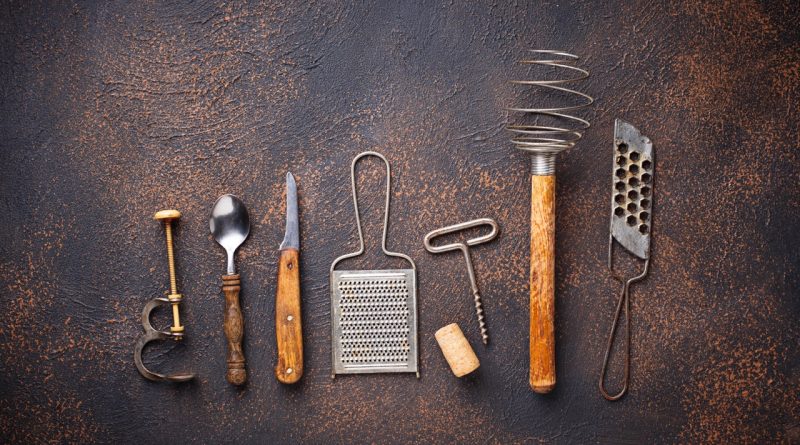Zwilling’s Diamond Honing Process Explained
Zwilling, a renowned name in the culinary world, has established itself as a leader in high-quality kitchen tools, especially knives. One of the standout features of their knife maintenance system is the diamond honing process. This technique has garnered attention for its effectiveness in maintaining the sharpness and longevity of kitchen knives. In this article, we’ll delve into the intricacies of Zwilling’s diamond honing process, exploring its scientific foundations, step-by-step techniques, and essential maintenance tips for optimal knife performance.
Understanding the Basics of Zwilling’s Diamond Honing Process
Zwilling’s diamond honing process revolves around the use of diamond abrasives to refine and sharpen the edges of kitchen knives. Unlike traditional honing methods that may rely on steel or ceramic materials, diamond honing employs synthetic diamond particles, which are renowned for their hardness and durability. This innovative approach allows for precise sharpening while minimizing the removal of material from the blade, thereby prolonging the knife’s lifespan.
The process begins with the knife being guided along a honing rod or surface embedded with diamond particles. As the knife makes contact, the diamond abrasives effectively realign the microscopic teeth of the blade’s edge. This realignment is crucial, as even the highest-quality knives can develop slight bends or misalignments with regular use. By maintaining a straight and sharp edge, chefs can achieve cleaner cuts, enhancing both the presentation and taste of their culinary creations.
One of the key advantages of Zwilling’s diamond honing is its accessibility for both professional chefs and home cooks. The design of the honing tools is user-friendly, allowing individuals with varying levels of expertise to effectively maintain their knives. Furthermore, regular honing can prevent the need for more extensive sharpening, making it a practical addition to any kitchen maintenance routine.
The Science Behind Diamond Abrasives and Their Benefits
Diamond abrasives are not only the hardest known material, but they also provide exceptional cutting and polishing capabilities. This hardness translates into a finer honing process, allowing for a sharper edge without the excessive removal of metal. Since diamonds can cut through steel more efficiently, the honing process becomes quicker and more effective. This efficiency is paramount in a fast-paced kitchen environment, where time and precision are critical.
In addition to their hardness, diamond abrasives offer consistent performance over time. Unlike traditional honing materials that may wear down with use, diamond surfaces maintain their effectiveness, ensuring that chefs can rely on their tools for consistent results. This durability means that the honing process can be repeated as needed without the concern of diminished performance, making it a reliable choice for knife maintenance.
Moreover, the use of diamond in honing processes leads to a smoother edge finish. This smoothness is essential for tasks such as slicing delicate ingredients or achieving thin cuts, where a jagged edge could cause tearing. Consequently, the scientific foundation of Zwilling’s diamond honing not only enhances the longevity of the knife but also improves the overall quality of food preparation.
Step-by-Step Guide to Zwilling’s Honing Techniques
To effectively use Zwilling’s diamond honing system, start by selecting the appropriate honing tool, typically a honing rod or a honing stone designed with diamond particles. Position the honing tool vertically, ensuring a stable base. Hold the knife at a slight angle—approximately 15 to 20 degrees—against the honing surface. This angle is crucial for achieving the ideal edge alignment.
Next, draw the knife along the honing tool from the heel to the tip, applying gentle pressure as you move. It’s important to maintain a consistent angle throughout the process to ensure even honing. Repeat this motion on both sides of the blade, usually around five to ten strokes per side, depending on the level of dullness. This method not only sharpens the knife but also keeps the edge aligned, preparing it for optimal performance in the kitchen.
Finally, after honing, it’s essential to clean the knife to remove any metal shavings or debris that may have accumulated during the process. This step helps maintain hygiene and prolongs the knife’s lifespan. Regular honing—ideally after every few uses—will ensure that your knives remain sharp and ready for all your culinary tasks.
Maintaining Your Knives: Tips for Optimal Performance
To ensure the longevity and performance of your Zwilling knives, proper maintenance is essential. Regular honing is crucial, but it should be complemented by proper cleaning and storage practices. After each use, knives should be washed by hand with mild soap and dried immediately to prevent rust and corrosion. Avoid placing knives in the dishwasher, as the high heat and moisture can damage both the blades and handles.
Storage is equally important in maintaining knife integrity. Utilizing a knife block, magnetic strip, or blade guards can protect the edges from nicks and scratches that may occur when stored in drawers. This not only preserves the sharpness of the blade but also enhances safety in the kitchen, preventing accidental cuts when reaching for other utensils.
Lastly, consider periodic professional sharpening as part of your knife maintenance routine. While diamond honing can keep knives in optimal condition for an extended period, professional sharpening can restore a blade that has become excessively dull. By combining regular honing, proper cleaning, and appropriate storage with occasional professional care, your Zwilling knives will remain reliable tools in your culinary arsenal.
Zwilling’s diamond honing process stands out as a testament to the brand’s commitment to quality and precision in knife maintenance. By understanding the science behind this innovative technique and implementing proper honing, cleaning, and storage practices, culinary enthusiasts can ensure their knives perform at their best. With these insights, both home cooks and professionals alike can enhance their culinary experiences, making every slice and chop a testament to quality craftsmanship.
